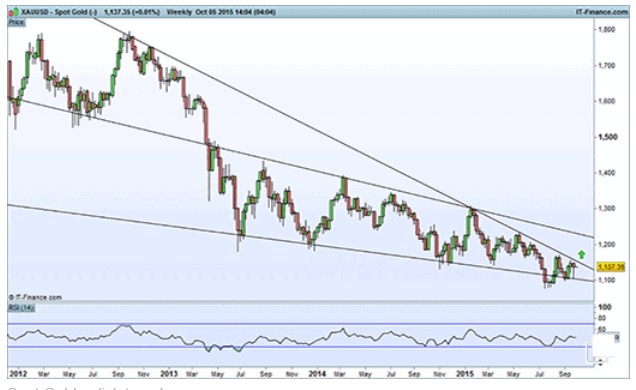Angus Nicholson for Chris Weston, Chief Market Strategist at IG Markets
Global macro forces are digesting the very poor nonfarm payrolls (NFP) numbers out on Friday. Had numbers like that come out a few weeks ago it seems likely that it would have precipitated a major selloff. The NFP numbers have severely dinted the likelihood of a Fed rate hike in 2015. One could argue that the prospect of an extended period of low rates in the US is a boon for equity markets. Although that did not seem to be what was interpreted following the delay of a rate hike in September, which prompted a renewed selloff the following week.
With the MSCI World Index still down over 8% since mid-August, the question hanging heavily on equity markets is whether we’ve seen the worst of the selloff or whether this is just a pause on a far more serious selloff?
The global volatility seen in August and September certainly does seem to have impacted the real economy in some of the economic data releases we have seen of late. And yet, there doesn’t seem to be a compelling case for a further significant move downwards in equity markets at the moment, barring a shock economic development from China.
That markets are being less affected by bad economic data does seem to indicate that the selloff may have bottomed, and this factor, rather than the prospect of extended low rates in the US, seems to be supporting equity markets today.
Unquestionably, a lot of stocks have returned to far more reasonable valuations of late and investors with 6-12 month time frames have been keen to pick them up. However, a major rally still seems unlikely unless the Bank of Japan (BoJ) and the European Central Bank (ECB) both announce increased monetary easing.
The last week’s Chicago PMI entered contractionary territory, the ISM PMI eased and NFP numbers were undershot; these have all pushed estimates for the first Fed rate hike into Q1 2016. However, John Boehner’s recently announced resignation as Speaker of the House is also likely to lead to volatility around the Fed meeting in December. Kevin McCarthy is currently tipped as the front runner to take over the position, but whoever succeeds Boehner will have to win over the nihilistic Tea Party contingent of House Republicans. Currently, the deadline for the increasing the US debt ceiling is set for 11 December, with the Fed decision set for 16 December.
The Tea Partiers are adamant that they do not want to see the debt ceiling raised without Planned Parenthood being defunded. It is likely that the new leader is going to have to stage a song-and-dance protest over raising the debt ceiling to appease them, even if ultimately Planned Parenthood will not be defunded. Nonetheless, this will add to further volatility around the December Fed meeting, possibly increasing the likelihood that a rate hike will be pushed back into 2016.
If the Fed is unable to raise rates in 2015 after having previously signalled a very strong desire to do so, then its credibility is going to be severely damaged. This is not only likely to crimp the performance of the US dollar in the near term, but also significantly damage the perceived primacy of the US dollar’s status as the default reserve currency – and further supporting China’s case for the renminbi’s inclusion in the International Monetary Fund’s (IMF) Special Drawing Rights basket. This could also be the adrenalin shot to the heart that gold has been waiting for since late-2012.
Gold has been performing well since the global selloff began in August, but the prospect of the Fed being forced to delay its first rate hike until 2016 could see gold break back up to its May highs of US$1200. Going into Q4, gold looks to be a decent asset to keep in one’s portfolio.

ASX
The ASX has recovered from Friday’s weaker performance and put strong gains of 1.8% on the board today. Volumes are 61% below their 30-day average due to the public holiday in New South Wales, however the performance is relatively consistent with other markets in Asia and the strong close of the US market on Friday.
The prospects of the US dollar weakness was clearly a much needed relief for the materials sectors, which saw an impressive outperformance rising 3.5%. Australia’s large diversified miners both had strong days, with BHP rising 3.8% and RIO 2.3%, and their market capitalisations certainly helped the sector as a whole. But the big boost for gold saw big gains by the gold miners as well. Newcrest Mining (NCM), as one of the best-run gold miner, saw some of the biggest gains on the index rising 9.5%. Northern Star Resources (NST) also rose 7.1% and Regis Resources (RRL) rose 5.1%.
The decline in the Baker Hughes oil rig count in the US on Friday helped boost oil prices, which similarly helped the energy sector on the ASX rise 2.8% today. Worley Parsons (WOR) and Drill Search (DLS) both had strong days, gaining 4.9% and 5%, respectively.